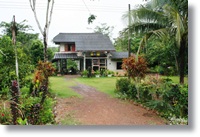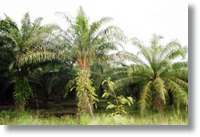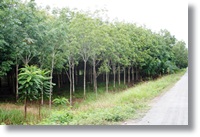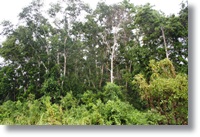Chulabhorn Pattana 4
Chulabhorn Pattana IV Village has also
been established at Samed Juan degraded forest
area adjacent to Chulabhorn Pattana III Village.
The whole Samed Juan degraded forest area was
donated for Chulabhorn Research Institute’s
resettlement programme by the Royal Forest
Department. However, The establishment of
Chulabhorn Pattana IV Village was delayed until
the completion of Chulabhorn
Pattana III village for strategic reasons.
Chulabhorn Pattana IV Village was settled in
720 ha of land. Most of the area in totally degraded
forest although Royal Forest Department declared
it as National Reserve Forest and a reforestation
programme was initiated. This programme was
unsuccessful because the newly planted trees were
left uncared and were also exposed to severe
drought.
The survey of this area, conducted by a team
of experts from Chulabhorn Research Institute,
revealed that there is practically no virgin forest
left in Samed Juan, In addition, one half of the total
area was occupied by squatters who encroached
the forest and replaced all the natural forest with
rubber trees.
The special feature of Chulabhorn Pattana IV
Village is that it is designed to be a Community
Forest.
The project, therefore, aim at reforestation,
rehabilitation of degraded forest area as well as
community development.
Apart from the 4 projects, Chulabhorn
Research Institute has expanded the result of the
community development and sustainable natural
resource management to other area by applying the
method to suit each specific area. The president of
Chulabhorn Research Institute has established 4
projects in 4 provinces in the south and later
expanded another 4 projects to the lower southern
part of the country around the border between
Thailand and Malaysia of which population are
majority Muslim. The project’s
main objective is to create peaceful community
and promote collaboration between groups of
people (Muslim Thai and Buddhist Thai) to co-exist
together in peace as well as recovering the forest
which is abundant of genetic and biological
diversity, and to prevent forest encroachment in the
future.



